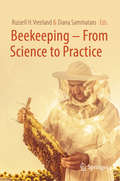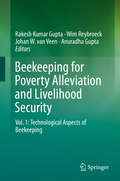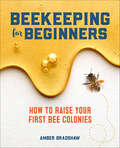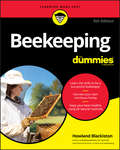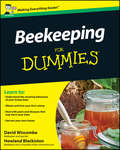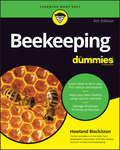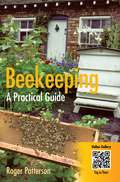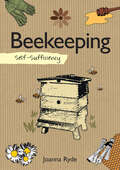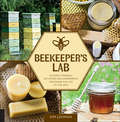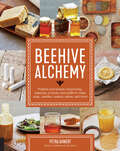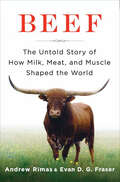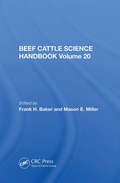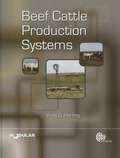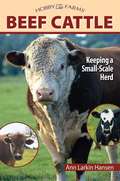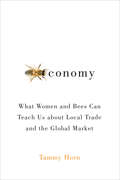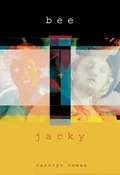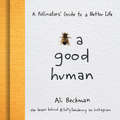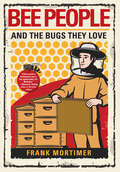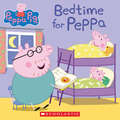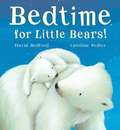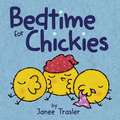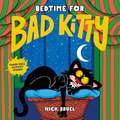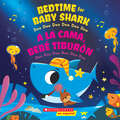- Table View
- List View
Beekeeping – From Science to Practice
by Diana Sammataro Russell H. VreelandThis book will help beekeepers understand the fundamentals of beekeeping science. Written in plain and accessible language by actual researchers, it should be part of every beekeeper's library. The respective chapters not only present raw data; they also explain how to read and understand the most common figures. With topics ranging from honeybee nutrition to strains of Varroa resistant bees, from the effects of pesticide chemicals to understanding diseases, and including a discussion of venom allergies, the book provides essential "knowhow" that beekeepers will benefit from every time they inspect their hives. Further, each chapter ends with the author explaining how beekeepers can (or cannot) directly utilize the information to enhance their beekeeping operation. The text is structured to facilitate ease of use, with each author addressing the same four issues: 1) What are the specific purposes or goals of these experiments? Or more simply: what have these studies taught us? 2) How should a non-scientist read the data generated? 3) What are the key points in relation to practicing beekeepers' goals? 4) How can the data or techniques discussed be applied by beekeepers in their own apiaries? This approach allows readers to look up specific information quickly, understand it and even put it to use without having to read entire chapters. Further, the chapters are highly readable and concise. As such, the book offers a valuable guide and faithful companion for all beekeepers, one they can use day in and day out.
Beekeeping for Poverty Alleviation and Livelihood Security: Vol. 1: Technological Aspects of Beekeeping
by Rakesh Kumar Gupta Wim Reybroeck Johan W. Veen Anuradha GuptaThis Book intends to address all aspects needed to develop beekeeping into a powerful instrument of rural development and will focus on beekeeping as a tool for Poverty Alleviation and Livelihood security. In the backdrop of the social and economic issues of the people living in poverty region, the book aims to delineate specific motivation approaches to engage them in beekeeping and will serve as a guide for effective marketing through diversification and value addition of bee products. Nevertheless, marketing and environmental issues will remain an important component of this book. The aim is also to focus on indirect benefit of beekeeping so that it is integrated with farming and nature conservation. Other topics include ensuring the provision of practical techniques in handling and management of bees. It will provide detailed information on good contacts with policymakers and authorities; and channels for attracting finance especially in the third world countries. An interdisciplinary approach is the key feature of the book and it will also focus on few case histories and success stories to encourage the reader to take up beekeeping as a new venture gradually in a phased manner like traditional-transitional and modernised beekeeping. With the publication of this book, we hope to hand out a practical guide that will assist all those who are involved in beekeeping for development. We hope it will stimulate beekeeping as an integrated activity with farming and nature conservation and will serve in many households for poverty alleviation and livelihood security.
Beekeeping for Beginners: How To Raise Your First Bee Colonies
by Amber BradshawHelp your hive thrive with this guide to beekeeping for new-bees.Wouldn't it be great to raise your own bees, have a fresh supply of honey, and bring thousands of healthy pollinators into your yard? Beekeeping for Beginners is a simple, step-by-step guide that helps you learn the fundamentals of modern beekeeping. You (and your bees) will be buzzing with delight.From picking the right hive and bringing your bees home to surviving winter and collecting honey, experienced beekeeper Amber Bradshaw takes you on an easy-to-follow journey through your first year of beekeeping and beyond.Beekeeping for Beginners includes:Just the essentials—Learn everything you need to know to begin your first colony—written with brand new beekeepers in mind.Modern beekeeping—Start your colony off right with guides that feature the newest practices and current, natural approaches.Learn to speak bee—Clearly defined terms and a complete glossary will have you talking like a pro beekeeper in no time.Begin your beekeeping the right way—and avoid getting stung by mistakes—with Beekeeping for Beginners.
Beekeeping For Dummies: 4th Edition
by Howland BlackistonThe single best and most comprehensive guide for prospective, new and experienced hobbyist beekeepers Beekeeping For Dummies, 5th Edition, is one of the most popular titles in the For Dummies series available today. Including the latest information regarding every aspect of backyard beekeeping and honey production, this book describes how to get started, how to care for and safely handle bees, and how to maintain healthy and productive colonies. This book is loaded with up-to-date, practical examples and helpful illustrations of proven techniques and strategies for both new and seasoned hobbyist beekeepers. Some of the updates for this brand-new edition include: New information regarding the critical role that nutrition plays in the health and productivity of your bees News about the latest beekeeping products, medications, and all-natural remedies Information regarding dozens of helpful beekeeping resources Redeemable coupons from beekeeping suppliers that save the reader money Beekeeping For Dummies embodies the straightforward and simple approach made famous by the For Dummies series. Each and every reader will benefit from its accessible and approachable take on beekeeping.
Beekeeping For Dummies
by Howland Blackiston David WiscombeThe fast and easy way to start and maintain a hiveBeekeeping For Dummies is a practical, step-by-step beginner's guide to beekeeping. It gives you plain-English guidance on everything you need to know to start your own beehive, from buying the right equipment, sourcing bees, and locating your hive to maintaining a healthy colony and harvesting honey. Plus, you'll get the latest information on the causes and effects of bee disease, colony collapse disorder, and the impact the sudden disappearance of the honeybee has on our environment and economy.Here, you'll get trusted information on beekeeping in the UK, specifically written to address climate, buying equipment, locating hives, the local impact of colony collapse disorder and ways to avoid or minimise the risk to your hive, seasonal beekeeping tasks, local beekeeping associations, and updated content on urban beekeeping. Understand the anatomy of your bees Learn techniques and tips for harvesting, bottling, packaging, and selling honey Discover the benefits of beekeeping Learn techniques on obtaining and hiving your beesIf you're a beginner beekeeper, taking a beekeeping course, or just have an interest in the plight of the honeybee, Beekeeping For Dummies has you covered!
Beekeeping For Dummies
by Howland BlackistonBeekeeping For Dummies, 2nd Edition reviews the tools of the trade, including complete instructions for building and maintaining beehives; offers detailed and easy-to-follow guidelines for all phases of honey production--including harvesting, bottling, packaging and marketing your honey; explores theories into the recent unexplained collapse of colonies and its environmental and economic on society; and provides new information on mites and diseases and recommend changes in bee medication and treatments.
Beekeeping - A Practical Guide: A Practical Guide
by Roger PattersonA practical book for new beekeepers and those interested in keeping their own bees, explaining everything they need to know to get started. It also covers how to make your garden attractive for bees. Published to coincide with the biggest beginners' day for beekeeping which takes place in February each year.
Beekeeping - A Practical Guide: A Practical Guide
by Roger PattersonA practical book for new beekeepers and those interested in keeping their own bees, explaining everything they need to know to get started. It also covers how to make your garden attractive for bees. Published to coincide with the biggest beginners' day for beekeeping which takes place in February each year.
Beekeeping (Self-Sufficiency)
by Joanna RydeLearn what all the buzz is about with this guide to the fascinating and sustainable hobby of keeping bees. Plus: honey recipes for food and skin care!Beekeeping is about management, control and learning to understand the honeybee. It can also become a very enjoyable and sociable pastime—visiting others&’ hives and picking up vital hints and tips is all part of the fun—and farming and eating honey that your own bees have produced is a pure delight. Joanna Ryde covers all aspects of beekeeping, from the basic tools and equipment needed for setting up a hive to detailed advice on when to harvest honey and honey-inspired recipes, from delicious cakes to beauty products. This really is the definitive guide for anyone thinking of keeping bees.
Beekeeper's Lab: 52 Family-Friendly Activities and Experiments Exploring the Life of the Hive
by Kim Lehman"Very informative and fun . . . Science, art, bee care, 52 different labs to entertain, delight, educate and inspire everyone in your family." —A Net in TimeBeekeeping's popularity as a hobby continues to skyrocket. And now, with Beekeeper's Lab, you can fill the year ahead with weekly activities from around and about the hive—including art projects, recipes, experiments, garden activities, and more!Bees are important to local ecosystems,now more than ever. Whether you're already a beekeeper, or are still considering getting your first hive, Beekeeper's Lab has projects perfect for you. This extensive guide book features 52 beekeeping and hive-inspired projects to keep you involved with your buzzing friends all year long.The tutorials are brief, accomplishable, rewarding, and best of all, they are presented in afriendly lab-style format. Try a new technique each weekwith how-tos and sidebars with tips that are perfect for the whole family. Beekeeping is a fun hobby to enjoy, plus, who doesn't want their own supply of honey?
Beehive Alchemy: Projects and Recipes Using Honey, Beeswax, Propolis, and Pollen to Make Soap, Candles, Creams, Salves, and More
by Petra AhnertA comprehensive introduction to making candles, home and body products life from the author of Beeswax Alchemy.Beehive Alchemy is a continuation of Petra Ahnert’s bestselling Beeswax Alchemy. With this new book, beekeepers (and bee lovers) will learn about the benefits and attributes of beeswax, honey, propolis, and more alongside a full range of projects and techniques to process and harness the amazing gifts of bees. Inside, you’ll find instructions to make Ahnert’s award-winning hand-dipped birthday candles, the classic French dessert canele bordelais, and much more, including:Alchemy for the BodyLiquid soap with honeyBeard balmOlive and honey lotionAlchemy of LightTaper candlesTea lightsPillarsAlchemy for the HomeFurniture polishWaxed cotton food wrapsWoodcutter incenseAlchemy in the StudioBeeswax crayonsEncausticBatikAlchemy in the KitchenCookies and candiesBeveragesFermentationsWhether you keep bees or just love them, Beehive Alchemy will become your go-to comprehensive guide for hive-to-home creations.Praise for Beeswax Alchemy:“An excellent introduction and solid technique instruction to make candles, lotions, and soaps with beeswax. . . . The true strength of this book is its instructions for making homemade body products. While similar in coverage to Leeann Coleman and Jayne Barnes’s Honey Crafting, Ahnert’s book provides better body products and more detailed technical instruction. Strongly recommended.” —Library Journal“This is the book I’ve been waiting for. Excellent instructions. Bountiful information. Beautifully done.” —Kim Flottum, author of The Backyard Beekeeper and editor of Bee Culture magazine
Beef: The Untold Story of How Milk, Meat, and Muscle Shaped the World
by Andrew Rimas Evan D. FraserThe cow. The most industrious animal in the world. A beast central to human existence since time began, it has played a vital role in our history not only as a source of food, but also as a means of labor, an economic resource, an inspiration for art, and even as a religious icon. Prehistoric people painted it on cave walls; explorers, merchants, and landowners traded it as currency; many cultures worshipped it as a god. So how did it come to occupy the sorry state it does today—more factory product than animal?In Beef, Andrew Rimas and Evan D. G. Fraser answer that question, telling the story of cattle in its entirety. From the powerful auroch, a now extinct beast once revered as a mystical totem, to the dairy cows of seventeenth-century Holland to the frozen meat patties and growth hormones of today, the authors deliver an engaging panoramic view of the cow's long and colorful history.Peppered with lively anecdotes, recipes, and culinary tidbits, Beef tells a story that spans the globe, from ancient Mediterranean bullfighting rings to the rugged grazing grounds of eighteenth-century England, from the quiet farms of Japan's Kobe beef cows to crowded American stockyards to remote villages in East Africa, home of the Masai, a society to which cattle mean everything. Leaving no stone unturned in its exploration of the cow's legacy, the narrative serves not only as a compelling story but as a call to arms, offering practical solutions for confronting the current condition of the wasteful beef and dairy industries. Beef is a captivating history of an animal whose relationship with humanity has shaped the world as we know it, and readers will never look at steak the same way again.
Beef Cattle Science Handbook, Vol. 20
by Frank H. BakerThe 1984 International Stockmen's School Handbooks include more than 200 technical papers presented at this year's Stockmen's School, sponsored by Winrock International. The authors of these papers are outstanding animal scientists, agribusiness leaders, and livestock producers who are expert in animal technology, animal management, and gene
Beef Cattle Production Systems
by Andy HerringThis textbook provides an integrated view of beef cattle production with a systems based approach, discussing the interrelationships of a broad range of aspects with the overall goal of optimising cattle production. This book provides the background to allow cattle producers to match their production environments with genetic, management, and marketing opportunities for sustainable beef production globally. This logic and resulting considerations can then be tailored to address specific regional challenges and opportunities worldwide. Considerations and examples for extreme situations will be provided, such as very small herds, very large herds, communal-group situations, and minimal artificial input systems. This practical book will be important reading for upper level undergraduate and postgraduate students in animal and veterinary science, producers, extension workers and veterinarians.
Beef Cattle
by Ann Larkin HansenHobby Farms Beef Cattle: Keeping a Small-Scale Herd for Pleasure and Profit, written by Ann Larkin Hansen, serves as an excellent introduction to raising cows for food or simply to graze while mowing and fertilizing the pasture. This colorful guide offers experienced hobby farmers and beginners all of the essential information necessary to purchase and maintain a small herd of beef cattle. While managing her own hobby farm in Wisconsin, Hansen shares her expertise in all things farm and has authored numerous books such as Making Hay, The Organic Farming Manual, and Finding Good Farmland. In this comprehensive book Beef Cattle, Hansen corrals the hobby farmer into the world of cowboys and cowgirls: she begins, "Beef cattle are as much at home on the hobby farm as they are on the range." This colorful primer begins with the basics, from biological traits and breeds to behavior and life cycle, and describes exactly what's required for a hobby farmer to maintain a herd of cattle-the four F's-fencing, feed, fields, and facilities. Given the expense involved in the purchase and maintenance of beef cattle, all hobby farmers will welcome Hansen's sound and sensible advice on buying the right cattle, whether steer calves for meat or breeding stock for building up a herd. The buying chapter helps farmers focus on what to look for when selecting cattle; how cows, heifers, and bulls are priced; where to purchase; and how to get cattle to your farm. The feeding and nutrition of cattle is a complicated topic, and Hansen breaks it down into the three basic components that every keeper needs to understand: pasture, hay, and grain. With directness and clarity, she explains the ins and outs of grazing, selecting ideal foodstuffs, using salt and minerals, and maintaining good weight on the herd. The reader can rely on her expert advice to learn the fundamentals of handling cattle, including herding, loading, and transporting cattle, as well as keeping beef cattle healthy through preventive methods, vaccinations, parasite control and veterinary assistance. For hobby farmers planning to breed their livestock, Beef Cattle includes a chapter on pairing cows and heifers, the actual breeding, artificial insemination, the care of pregnant cows, calving, caring for the young, and weaning calves. The final chapter of the book "Marketing and Processing Your Cattle" is geared toward hobby farmers looking to get beef processed, grade meat, and sell the final product. Sidebars of fun trivia, stories from farmers, and useful advice appear throughout the handbook. A glossary of over 100 terms; an appendix of health issues; a resource section of useful websites, books, and periodicals; and a detailed index complete the book.
Beeconomy: What Women and Bees Can Teach Us about Local Trade and the Global Market
by Tammy HornA fascinating study that &“opens a window on the world of beekeeping and female beekeepers&” (Lexington Herald-Leader). From Africa to Australia to Asia, women have participated in the pragmatic aspects of honey hunting and in the more advanced skills associated with beekeeping as hive technology has progressed through the centuries. Who are the women who keep bees and what can we learn from them? Beeconomy examines the fascinating evolution of the relationship between women and bees around the world. Bee expert Tammy Horn profiles female beekeepers, describing their work and how they manage it; the sense of community they enjoy; how beekeeping is relevant to questions about globalization and politics—and how it provides an opportunity for a new sustainable economy, one that takes into consideration environment, children, and family needs.
Bee and Jacky
by Carolyn ComanThirteen-year-old Bee resumes the physical relationship she has had in the past with her seventeen-year-old brother Jacky, a move that forces them to confront their personal histories.
Bee a Good Human: A Pollinators' Guide to a Better Life
by Ali BeckmanCombining inspiration, humor, and entomology, Instagram artist Ali Beckman (@SoFlyTaxidermy) is the internet's go-to gal for bug-related content that makes you a happier human. Beckman's witty comics, which use actual insects in everyday situations, illustrate the importance of pollinators as well as body positivity and mental health awareness. Using creatures that are donated, purchased, or found dead to create amusing cartoons, Bee a Good Human highlights the integral role of insects in our environment while also demonstrating we all have a part to play in this world. Beyond bugs, Beckman's art speaks to the value of self-love as she shares a narrative of growth and finding confidence within.Bee a Good Human features the best of Beckman's @SoFlyTaxidermy Instagram art. With 106 color illustrations, many of which have never appeared online, this gift of a book will make you consider the bigger picture—and laugh a little too.
Bee Time: Lessons from the Hive
by Mark L. WinstonBeing among bees is a full-body experience, Mark Winston writes. Bee Time presents his reflections on three decades spent studying these remarkable creatures, and on the lessons they can teach about how humans might better interact with one another and the natural world, from the boardroom to urban design to agricultural ecosystems.
Bee People and the Bugs They Love
by Frank Mortimer&“A successful and funny book that is sure to swell the ranks of the world&’s beekeepers.&” —New York Times A fascinating foray into the obsessions, friendships, scientific curiosity, misfortunes and rewards of suburban beekeeping—through the eyes of a Master Beekeeper . . . Who wants to keep bees? And why? For the answers, Master Beekeeper Frank Mortimer invites readers on an eye-opening journey into the secret world of bees, and the singular world of his fellow bee-keepers. There&’s the Badger, who introduces Frank to the world of bees; Rusty, a one-eyed septuagenarian bee sting therapist certain that honey will be the currency of the future after the governments fail; Scooby the &“dude&” who gets a meditative high off the awesome vibes of his psychedelia-painted hives; and the Berserker, a honeybee hitman who teaches Frank a rafter-raising lesson in staving off the harmful influences of an evil queen: &“Squash her, mash her, kill, kill, kill!&” Frank also crosses paths with those he calls the Surgeons (precise and protected), the Cowboys (improvisational and unguarded) and the Poseurs, ex-corporate cogs, YouTube-informed and ill-prepared for the stinging reality of their new lives. In connecting with this club of disparate but kindred spirits, Frank discovers the centuries-old history of the trade; the practicality of maintaining it; what bees see, think, and feel (emotionless but sometimes a little defensive); how they talk to each other and socialize; and what can be done to combat their biggest threats, both human (anti-apiarist extremists) and mite (the Varroa Destructor). With a swarm of offbeat characters and fascinating facts (did that bee just waggle or festoon?), Frank the Bee Man delivers an informative, funny, and galvanizing book about the symbiotic relationship between flower and bee, and bee and the beekeepers who are determined to protect the existence of one of the most beguiling and invaluable creatures on earth.&“A very entertaining book.&” —American Bee Journal &“A playful storyteller… A compelling memoir.&”—Foreword Reviews &“A useful how-to guide as well as an affectionate ode to nature&’s pollinators and honey makers.&”—Publishers Weekly &“This book includes great humor and a use of allegory that reveals tremendous background knowledge.&”—San Francisco Book Review &“Frank&’s personal stories of his beekeeping journey are entertaining, well written, and will quickly have you happily lost in the world of bees.&”—Paleo Magazine "Bee People and the Bugs They Love is the bee's knees and getting a ton of buzz. Bee smart, people, and read this un-BEE-lievably interesting look at the quirky world of beekeeping."—Harlan Coben, #1 New York Times bestselling author&“A delightful portrayal for non-beekeepers of what life is like for those of us who are always thinking about bees.&”—Tom Seeley, author of The Lives of Bees &“A fun and exciting tale of the wonder-filled world of beginner beekeeping.&”—Noah Wilson-Rich, author of Bee: A Natural History , and CEO and partner The Best Bees Company
Bedtime for Peppa (Peppa Pig Ser.)
by ScholasticAn all-new storybook featuring Peppa--a lovable, slightly bossy little piggy!It is bedtime for Peppa and George, but the little piggies are not sleepy! They must take their bath, brush their teeth, and listen to a story before they can have sweet dreams.Join Peppa and George on an adorable bedtime-themed tale in this storybook based on the hit Nick Jr. show!Now in ebook!
Bedtime for Little Bears!
by David BedfordAfter a long day of exploring in the snow, it's time for Little Bear to go to bed. But he's not tired yet! So Mother Bear and Little Bear go on one last walk to see the other animals getting ready for bed. Will this make Little Bear sleepy enough to snuggle down for the night?
Bedtime for Chickies (Chickies)
by Janee TraslerCheep cheep cheep! What does it take to get little Chickies to sleep? Meet the Chickies in their very first book. With engaging rhymes and endearing illustrations, these books are perfect for babies and toddlers to enjoy. Young readers will love to fall asleep along with the Chickies!
Bedtime for Bad Kitty (Bad Kitty)
by Nick BruelThis new picture book in Nick Bruel's Bad Kitty bestselling series is sure to be a bedtime favorite, complete with a paper doll activity kit! It's bedtime in the Bad Kitty household but Kitty does not want to go to bed.She doesn't want to brush her teeth.She doesn't want to put on her bunny pajamas.She doesn't want to use the potty.What she wants to do is:SING SING SING SING SING PLAY PLAY PLAY PLAY PLAYRUN RUN RUN RUN RUNFinally, when she runs out of ideas (and energy) and is promised a perfect bedtime story, Kitty gives in...but can she stay awake for the ending?
Bedtime for Baby Shark: Doo Doo Doo Doo Doo Doo / Duu Duu Duu Duu Duu Duu (Baby Shark)
by John John BajetSing and dance along with Baby Shark as he gets ready for bed in this playful song and story -- the follow-up to the bestselling picture book!Canta, baila y lee esta nueva cancion para la hora de dormir que presenta a Bebe Tiburon, Mama Tiburon, Papa Tiburon y otros amigos subacuaticos. Los ninos y sus cuidadores se divertiran por igual con esta simpatica historia que narra la rutina de una familia tiburon a la hora de dormir, con llamativas y divertidas ilustraciones y una melodia pegadiza que no podran dejar de cantar.¿Estas listo para ayudar a Bebe Tiburon a prepararse para dormir?Sing, dance, and read along to this brand-new bedtime song, featuring Baby Shark, Mama Shark, Daddy Shark, and more underwater friends. Kids and caregivers alike will delight in this silly illustrated story of a shark family's bedtime routine, full of funny, eye-popping illustrations and a catchy tune you won't be able to stop singing.Are you ready to help Baby Shark get ready for bedtime?
